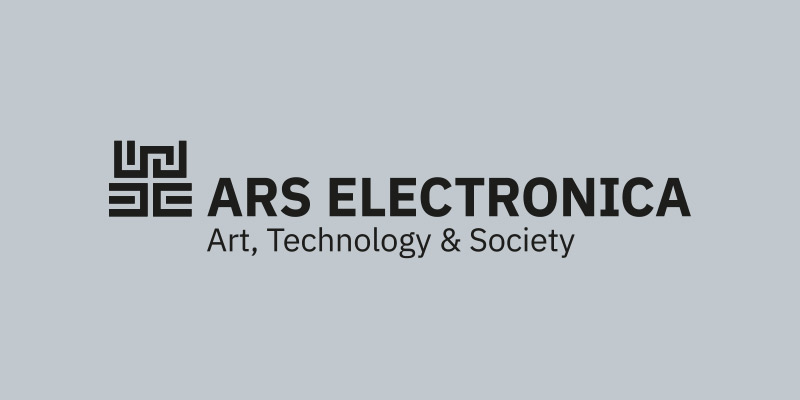Location

Alternative sports viewing: Cross-modal appreciation of sports events
Junji Watanabe, NTT Communication Science Laboratories (JP)
Haptic communication technology and human information science can update inclusive sports viewing. By adding a haptic sensation to the viewing experience or converting a sports video into a haptic sensation, we present a novel form of sports viewing in which the spectators whether disabled or not, can enjoy a sports event with the vicarious excitement. Junji Watanabe attempts to re-create a sports viewing experience, which does not depend on visual or auditory stimuli, as conventional sports viewing does, and in which spectators can generate alternative reality of the event. Projects of “alternative sports viewing” are presented, achieved by adding or subtracting various sensations.
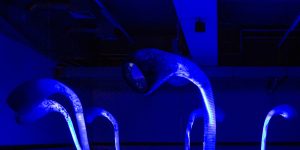
I, HUMAN
SAINT MACHINE (RO)
I, HUMAN uses empathy as content to influence the feeding conditions of microorganisms, and light as content carrier. Developed around the idea of interconnectivity, it analyzes how individual interactions can produce collective outcomes at different scales. I, HUMAN is testing new models of synergistic behavior mediated by technology in an attempt to identify coherence patterns, a metaphor for our evolution as a species, which may depend on our capacity to empathize.
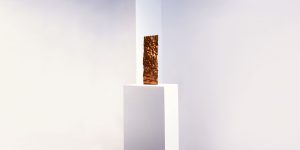
Quadrature
Juliane Götz (DE), Sebastian Alexander Neitsch (DE)
The cosmos serves the new media arts collective Quadrature as an incomprehensible yet genuinely real place. A place full of concepts and superlatives which very often transcend a common mind.
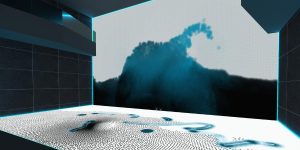
Liquidus
Roman Divotkey (AT), Nora Loimayr (AT), Christoph Schaufler (AT), Wolfram Weingartner (AT)
*Liquidus* is an interactive, physics-based fluid simulation that turns Deep Space into a playful laboratory to experiment with various properties of liquids and gases. Data for the physics calculations are processed and visualized in real-time and are also utilized to create a soundscape that supports the overall visual experience.
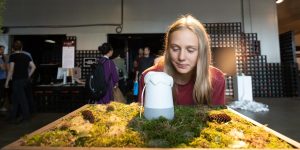
Project Alias
Bjørn Karmann (DK), Tore Knudsen (DK)
Our relationship with technology is formed by how we interact with it. However, commercial smart products for the home tend to treat the user as passive consumers. Especially smart home assistance has shown design patterns that limit the possibilities of interaction and agency from the user perspective, even in the most private and personal sphere—the home. Our interaction patterns are highly determined by the designers of these products, and with Alias, we are interested in how this power relation can be redefined, especially when it comes to privacy. The exciting future that “smart” technologies can give us often comes with conditions that diminish our privacy and the feeling of being in control. With Alias we want to challenge this condition and ask what kind of “smart” we actually want in the future.
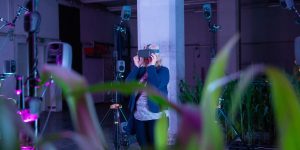
Immersify: Immersive Ambisonic Audio
Maciej Glowiak (PL), Maciej Jaskiewicz (PL), Leszek Nowak (PL), Wojciech Raszewski (PL), Jan Skorupa (PL), Eryk Skotarczak (PL)
Experimental ambisonic space combined with VR: The installation is built of 24 independent loudspeakers, which come together to create a sphere. Visitors have the opportunity to stand in the center of the area, wear VR goggles and take part in two different music sessions.

Tea Session: Laboratory of the Future
Panel Discussion
What is the role of the laboratory in the 21st century? This panel discussion will take a closer look at the constellations and methodologies that form the modern-day laboratory, spanning from scientific research to the Art Thinking methods so frequently employed within the Ars Electronica Futurelab itself. Working at the nexus of art, technology and society, Ars Electronica’s very own atelier and laboratory will be the starting point for a discussion on contemporary art and research practices both within and beyond the Ars Electronica ecosystem.
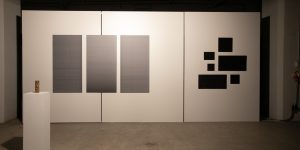
Galerie Liusa Wang, Paris
Liusa Wang opened her gallery in January 2014 with the primary aim of promoting young contemporary Chinese artists. Today, she wants to create a dialogue between emerging Chinese artists and young artists around the world. Meetings with the specialized presses and the growing support of collectors also largely established the recognition of these artists. In addition, working with public institutions contributes to the same objectives. The gallery is sensitive to the narrative poetry of the concepts and open to diverse mediums. The exhibition space is located on Boulevard Saint-Germain in Paris, in the heart of the Latin Quarter, offering various spatial possibilities.
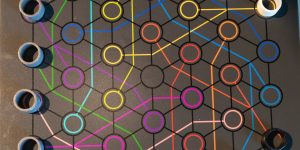
Proelium
Hakan Lidbo (SE)
*Proelium* is a board game with a space-folding board, developed for people with enhanced ability to see patterns.

Eruptions
Suyang Kim (KR), Dieter Stemmer (AT), Marlene Reischl (AT), Christian Philip Berger (AT)
Emotional outbursts and eruptive climaxes dominate this program both musically and visually.


